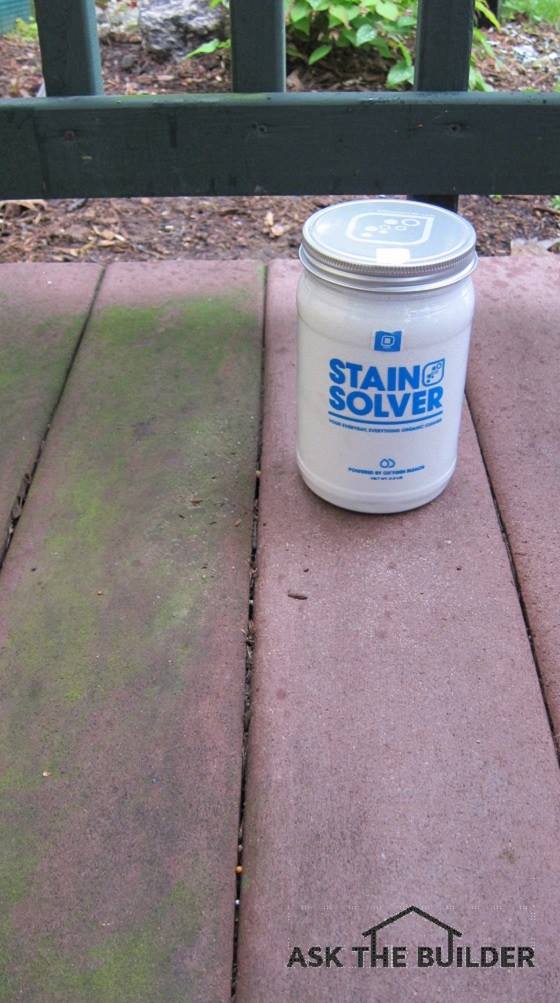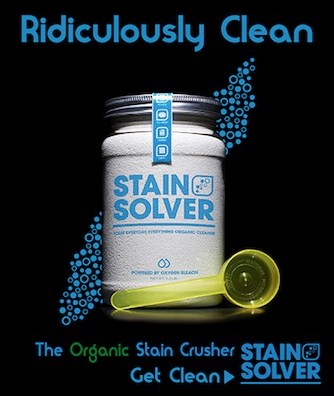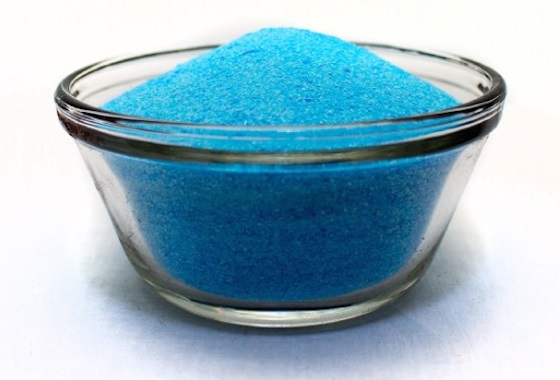How to Remove Algae

Oxygen bleach was used to remove the algae from the decking boards on the right. Photo Credit: Tim Carter
"The good news is that it's easy to remove algae. The better news is that once you have your patio, deck or roof free of algae, you can do something to STOP algae from coming back."
How to Remove Algae Checklist
- Use Stain Solver oxygen bleach
- Chlorine bleach is TOXIC - Kills Plants & Trees!
- Apply with a garden hand-pump sprayer
- Work in the shade
- CLICK HERE to Get Tim's FREE & FUNNY Newsletter!
DEAR TIM: My house must be a magnet for algae. I have green algae on the shaded parts of my deck, it's on my patio and on my vinyl siding. Furthermore, I believe there's black mildew on my siding.
Then there's the roof. I have black streaks of algae up there. How can I safely remove the algae from all these surfaces without harming me, my pets and my plants? I've heard I should use bleach, but something tells me that this is not the right approach. What would you do? Caroline B., Jackson, MS
How to Remove Algae at My Own Home
DEAR CAROLINE: I have some algae issues at my own home.
I have two decks, one on top of another. The lower deck has lots of shade which is a perfect place for algae to grow.
I also have algae coating stone steps on my property. I work at keeping them clean because when wet, the algae-covered steps are like walking on wet ice. They are so slippery! You, I, and millions of others suffer from algae around our homes.
The good news is I developed a non-toxic certified organic cleaner that's SAFE to use on all exteriors surfaces. It gets rid of algae in no time and will NOT HARM any vegetation, fish in ponds, or our earthworm allies in the soil!
This algae cleaner is called Stain Solver. I've got much more about it below.
Free & Fast Bids
Is it Easy to Clean Algae?
The good news is that it's easy to remove algae. The better news is that once you have your patio, deck or roof free of algae, you can do something to STOP algae from coming back.
More on that far below. Keep reading, because you have to clean the algae first.
What is the Best Algae Cleaner?
Certified organic oxygen bleach is the best algae cleaner if you care about the environment and your plants and trees.
Do NOT use chlorine bleach or any product that says on the label it contains sodium hypochlorite. That's the fancy name for chlorine bleach. Chlorine bleach will KILL all the vegetation around your home.
The first thing you might find interesting is there's more than one type of bleach. For many years growing up, I thought bleach was bleach.
My mom used to buy those white plastic bottles of smelly chlorine bleach for years to use in our laundry. She would save the bottles, rinse them out and then fill them with water in case the water main broke outside our house. It was a big joke around our home, but my mom always was prepared!
Much to my surprise I discovered, about seventeen years ago, there's at least one other bleach - oxygen bleach. It does many of the same things chlorine bleach does, but it's not toxic.
Where Can I Get Oxygen Bleach?
Oxygen bleach is the preferred bleach to use on the exterior, and interior, of your home because it will not harm you, your pets or your plants. My favorite oxygen bleach is Stain Solver. It's made in the USA with USA ingredients.
IMPORTANT TIP: Stain Solver is certified organic. Most of the other oxygen bleach products out there are NOT certified organic.
Chlorine bleach, on the other hand, is highly toxic to plants, humans and animals. It's so powerful that it will remove the color from wood decking and it can discolor painted exterior surfaces much like it takes out the color from fabrics.
Is Stain Solver Safe for Plants, Wood & Color-Safe?

Stain Solver is MADE in the USA with USA ingredients that are food-grade quality. CLICK THE IMAGE to order some NOW.
Stain Solver will not take the color out of your wood decking, your vinyl siding, your painted surfaces, or your roof. Stain Solver is a powder you mix with water.
Once mixed with warm or hot tap water, all you get is more water, oxygen ions that do the cleaning and some harmless organic soda ash. Not all oxygen bleaches are the same. Many contain fragrances, dyes, color crystals, and excessive fillers.
The popular oxygen bleach that you see on TV commercials is made with offshore ingredients that are of dubious quality. It also contains far more filler than active ingredient.
Do You Dissolve It in Warm Water?
This past weekend, I mixed up some Stain Solver to clean algae from my lower deck and from the deck railing. I simply dissolved the powder in warm water, poured it into a simple garden hand-pump sprayer and squirted it on the algae-coated surfaces.
I allowed it to soak for about ten minutes, then used a scrub brush to remove the green algae. After rinsing with a garden hose, the surfaces looked brand new! You can see the results in the photo above.
That's my own Trex decking. You can see the board on the left still has the algae coating.
Can You Clean Algae From Roofs?
You can clean roofs with oxygen bleach, but it can be challenging. The biggest problem is that it's dangerous working up on a roof. The algae-covered roof, once wet with the oxygen bleach solution, can be very slippery. You need to make sure you do not fall from the roof.
Watch this video to see how to clean algae from a roof using Stain Solver.
It's imperative the roof surface, or any surface you're cleaning, does not dry out before you get to scrub it. You must keep the surface wet with the solution at all times. This is hard to do on a roof on a sunny day. It's best to clean roofs on overcast days when air and roof temperatures are cool.
Do You Need to Scrub the Surface?
You need to scrub the surface after the oxygen bleach solution soaks. Don't ever think that you can just spray on any magical cleaner and get perfectly clean surfaces.
When you take a shower, you don't just stand under the water stream. You rub your skin. The rubbing with soap is what gets you clean. Rubbing is mechanical agitation.
The same is true for clothes. If you spray your clothes with a cleaner and let them dry, they won't be clean. You must let them AGITATE with soap in the washing machine.
You need to agitate the Stain Solver on the roof. Period.
IMPORTANT SCAM TIP: Some companies try to ply a product that you just spray on and then walk away. They say you have to do no more.
Marketers that make that claim are yanking on your lazy heartstrings that want the easy way out. Don't believe the spray-and-rinse claims for a second.
As I pointed out above, you already know that you have to mechanically agitate ANYTHING to get it clean.
Once you have the surfaces clean, you can inhibit the growth of algae if you coat the surfaces with a biocide.
Copper is a natural biocide as is zinc to a lesser degree. If you have an exposed copper or zinc strip about 6 inches wide along the top of your roof, each time it rains tiny metal atoms are deposited on the roof. Copper stops algae from growing. PERIOD.
Watch this video for PROOF!
Do I Use Copper Sulfate to Prevent Algae for Patios and Decks?
It's hard to get copper to coat siding, decking or patios. But if you periodically spray your patio and decks with a copper sulfate solution, it will inhibit algae growth.
Please CLICK the following image of copper sulfate crystals to buy some. You mix 1.25 pounds per gallon of HOT tap water. Stir until dissolved. Apply to DRY patio, deck, siding, etc. using a garden hand-pump sprayer.
IMPORTANT REMINDER TIP: You need to CLEAN the algae off first before using the copper sulfate. Copper sulfate is NOT A CLEANER. CLEAN the algae with Stain Solver oxygen bleach for BEST RESULTS.

This is copper sulfate. It dissolves easily in water. Spray it on with a hand-pump sprayer. CLICK THE IMAGE TO ORDER THE COPPER SULFATE NOW.
You can see why you'll just have to suck it up and do periodic cleaning to keep your home looking great.
Column 935


13 Responses to How to Remove Algae